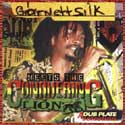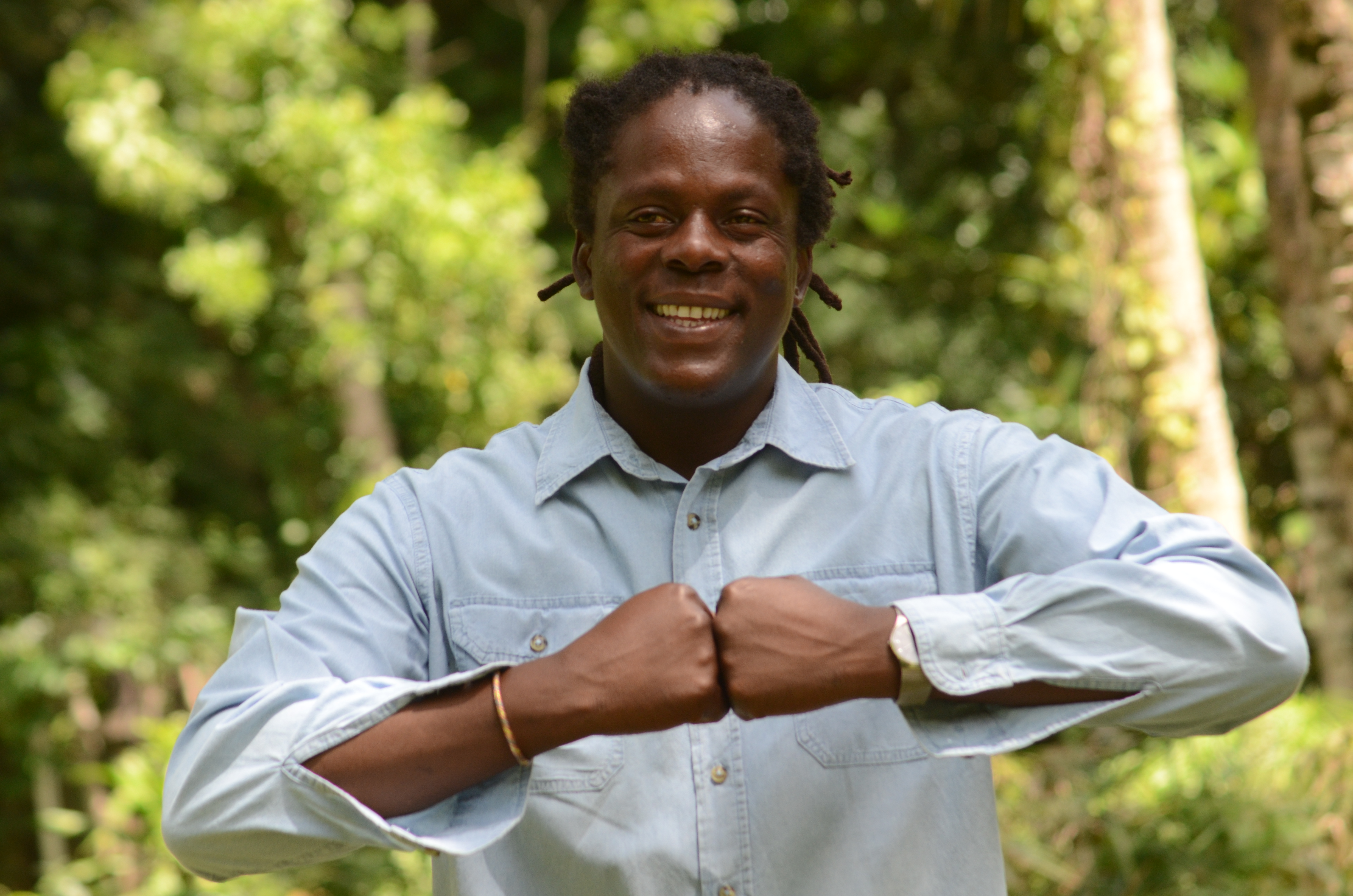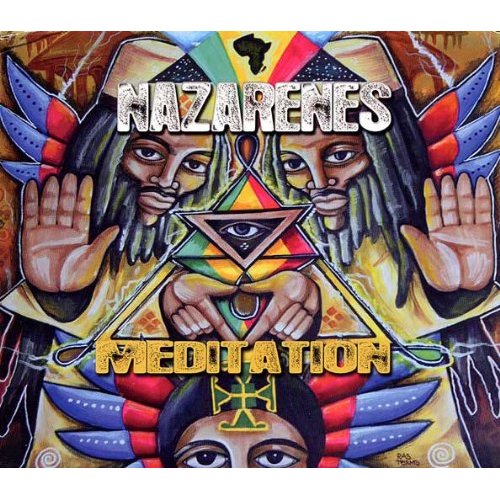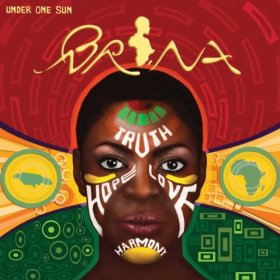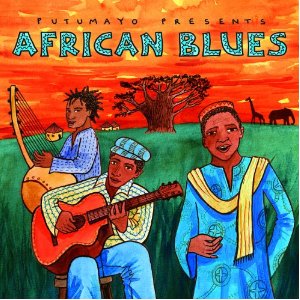“GARNETT SILK MEETS THE CONQUERING LION: A Dubplate Collection” (Reggae1Luv, 2000)
The relationship between Rasta-influenced Reggae music and its global audience is like a hall of mirrors. What we hear and see always reflects or references something else: old riddims re-cycled; ancient prophesies being claimed for modern-day fulfillment. Within this culture, it is difficult to distinguish the real from the reference. Rasta has been called a “community of prophets.” From the roots to the international fruits, the lyrics of Rasta Reggae, and the self-presentation of the artists that make the music, are thoroughly immersed in religious mythology. The sheer number of singers and DJ’s claiming the prophets’ mantle, and the relentless inventiveness of their artistic expression, give their self-mythologizing an artistic and moral credibility, within the culture. Yet Rasta Reggae rootedness in a fundamentalist Biblical frame of reference also perpetuates a self-referential insularity. This makes the culture hard to translate, to those outside of this hall of mirrors.
Inevitably, Rasta artists that have inspired the most interest beyond bass culture are those who die young–a select few who seem to live out the core myth of Judeo-Christian culture: that of the messianic figure who dies for his people. Jamaicans may have a uniquely messianic mindset, yet the explosion of interest in Bob Marley as a sort of post-colonial and trans-racial Christ figure could not have developed without the participation of Reggae’s global audience in this myth-making process. This is, after all, a fairly universal myth: witness the way in which figures as diverse as Che Guevara and Martin Luther King Jr. are widely seen as messianic figures.
For a couple of decades now, Reggae fans have heard an endless series of artists being hailed as “the next Bob Marley.” An impossible search, of course, but also a fatal dilemma, since the only way in which a Reggae artist could possibly begin to achieve that sort of mythic stature would be to die young. A small price to pay, perhaps, for immortality.
Garnett Silk died in a house fire in Jamaica on December 1994. At the time of his death, he was a leading light of what became know as the “Rasta Revival,” alongside Luciano, who is perhaps the only artist of the 1990s with enough talent to follow Garnett’s trajectory, in terms of creating a body of work that become “new Psalms.” Garnett clearly had the whole package: good looks, charisma, great songs and voice, and moral vision. He has a songbook that will surely stand the test of time: classics like “Complaint,” “Zion In a Vision,” “The Rod,” “Splashing Dashing,” “Fill Us With Your Mercy,” and many more.
The man born as Garnett Smith was a mere 24 years old when he died. He quickly acquired a status as a Rasta saint. In the biographies of saints, we see a process known as hagiography–the projection of divine qualities onto culture heroes, and the erasure of their human limitations. This process is in full bloom now for Garnett Silk. The latest Silk collection, a gathering of his dub plates cut for the Conquering Lion sound system, includes some of the following assessments:
“Garnett Silk was a vessel sent by the Almighty. He definitely did not belong to himself…his body housed the spirit of the Almighty.” (Sister Elise Kelly, Irie-FM disc jockey);
“I see the man as a sacrificial lamb of the struggle for the liberation of the African.” (Yasus Afari, dub poet);
“He came and did his work and maybe it even feel like he left early, but maybe it happened this way so that people can penetrate his words more…Ever live Garnett Silk.” (Tony Rebel).
“He brought a combination of unshakable commitment, spiritual vision and a deep knowledge of the scriptures into his music. Garnett was being hailed as Reggae’s New Messiah.” (Liner notes).
Well now.
Many of my Idren and I have also found great inspiration in Garnett’s music. I personally find the process of myth-making regarding figures such as Garnett and Bob fascinating, in its own right. Yet it is a timely irony that the Garnett actually on display here is a more human Garnett, and indeed, the most Jamaican Garnett, which would be the Garnett of the sound systems, the dancehall. Which was, after all, the foundation from which Garnett rose.
This CD could most profitably be heard while also reading Norman Stolzoff’s new book Wake the Town and Tell the People: Dancehall Culture in Jamaica. And while listening to three other CDs released near the 5th anniversary of Garnett’s death in December 1999: “Live at Reggae Sunsplash 1994” (Tabou 1); “Give I Strength” (Brickwall), and “Killamanjaro Remembers Garnett Silk” (Revue/JamDown).
The Sunsplash recording presents Garnett in the version closest to the myth of prophetic glory: there are messianic references (“Kingly Character”); references to an African Zion (“Zion in a Vision” and “Hello Africa”), and Garnett situates himself within a community of prophets (on “The Rod”–“Music is the rod and we are Moses, leading God’s children to the promised land”). The band is Dean Fraser and the Firehouse Crew, the same group that most of Reggae’s international audience would see backing other Rasta prophets on tour.
The “Give I Strength” set takes us closer to the Jamaican Garnett, before he was reconstructed and mythologized for international consumption. The entire album consists of tracks produced by Bobby Digital, still on a spiritual vibe, but with a fascinating, more yard-style reading of songs such as “Complaint,” better known in its Penthouse version.
With “Killamanjaro Remembers,” listeners can hear a version of Garnett actually heard by everyday Jamaicans: live and direct, on a touring sound system, often alongside other artists such as Lukie D, Capleton, Luciano, Richie Stephens, and Dennis Brown. There are plenty of inspirational songs here, but also an increasing number of “sound boy” tunes.
“Jaro,” as the system is known in Jamaica, is the crew with which Stolzoff traveled while he researched Wake the Town, his fascinating ethnography of sound system culture. And it is this book which would provide the best introduction to the Garnett who can be encountered on the Conquering Lion CD. Here the disjuncture between the Garnett of prophetic myth, and the Garnett who actually performed on Jamaican sound systems, is most pronounced. The prophetic/messianic figure bumps head with the sound boy murderer.
It is obviously in the interest of people marketing Garnett to perpetuate this myth, to add to the messianic frame of reference. Thus the Conquering Lion notes tell us that this sound system, which was based in Lincoln, in the hills of Mandeville, “maintained a conscious roots direction amidst the onslaught of x-rated lyrics.” Conquering Lion is described as “a cathedral of consciousness.”
True enough, as far as it goes. Conquering Lion did sponsor many Roots artists, and played an important role in the Rasta revival. Yet this notion of a “cathedral of consciousness” that bred new prophets who do battle against “spiritual wickedness in high and low places” seems to have more to do with how people a foreign perceive roots culture, than with how the culture is actually lived inna de yard.
There are 19 dubplates collected on Conquering Lion–specials that were cut specifically to be played in the dance by a sound system engaging in ritual competition with other sounds. So almost all of them are clash tunes: sound boy murderation designed specifically with the intent of “killing” rival sounds. Thus Garnett’s breakthrough tune with Bobby Digital, “It’s Growing,” is redone here as “It’s Roaring,” over the classic “Fire Burning” riddim: “Lion is going to swell your head and burst it like a balloon.” (This is done with slight variations on the “Killamanjaro” CD as “Jaro Ruling”).
Or check the subtle spirituality expressed on “Evacuate” (also on the Killamanajaro CD):
“If you fly like a jumbo jet, Conquering Lion will break your neck, I am vex and I don’t intend to deny it.” The latter lyric was later reworked, of course, into a “consciousness” tune.
The cut simply titled “Conquering Lion” brings this perspective into the “cathedral of consciousness”: “Conquering Lion will murder you, so you better watch what you do; you’re acting as if you’re brave, CL will dig your grave.”
Pop chestnuts are revamped as ammunition for sound system bragging rights, as on “I Can See Clearly Now”: “There is a dub plate I’ve been praying for… It’s going to be Lion, Lion all the way.”
And Rasta Reggae culture’s link with Christian fundamentalism comes through in a remake of “Onward Christian Soldier”: “Lion, rub a dub soldier, marching as to war.” However, snippets of consciousness do have their place even in sound system murders. In the above tune about musical soldiers, Garnett sings: “no bottles, no stones, no bombs, no guns.” Perhaps a variation on Marley’s line, “music is the biggest gun, ’cause it save.”
Some tunes mesh consciousness and ritual murderation. “Oh Me, Oh My,” featuring Mikey Spice, begins with Garnett quoting the Psalms, “I lift up my eyes to the hills, from which comes my help,” and ends with him singing “dibby dibby sound boy bound to die.”
Similarly, “A Lot More Coming” is another sound clash tune, yet the synth quotes the “Promised Land” riff, and Garnett quotes Marley’s line from “One Love:” “let them pass all their dirty remarks.”
This CD affords numerous glimpses of the artist Garnett in action: cracking up in laughter at the end of an attempt (not entirely graceful) at DJ-ing on the end of “Bless Me.” It also illustrates just how fluid Jamaican music is at the roots. Different tunes are endlessly versioned off the same riddim, of course, as is evident here. But also, the same tune is cut with different riddims. So the version of “Put on Di Pressure” Garnett does on this set is remade on the Jaro collection on top of the Real Rock riddim, to very different effect.
I’ve had friendly arguments with some of my Idren about Sound Bwai tunes. Some folks see the talk of murderation as pro-violence, and from this perspective, purists might be disappointed to see Garnett participating in this genre. I can’t enter a discussion here about the role of ritualized expressions of violence in sound system clashes, or sound boy tunes. But again, I’d recommend Wake the Town for those who want to get a deeper perspective of what’s going on here. As Stolzoff argues, sound system clashes both perpetuate a worldview in which images of violence are normative, and yet also defuse literal interpretations of said violent imagery, and often attempt to redirect the massive’s attention. One of my favorite cuts here, “Hard Nut to Crack,” featuring Tony Rebel, is on one level about killing sounds. But it’s also about the power of sounds to bridge social divides–“whether you’re from downtown or uptown”–a chasm just as significant in Jamaica as, say, black and white in North America.
